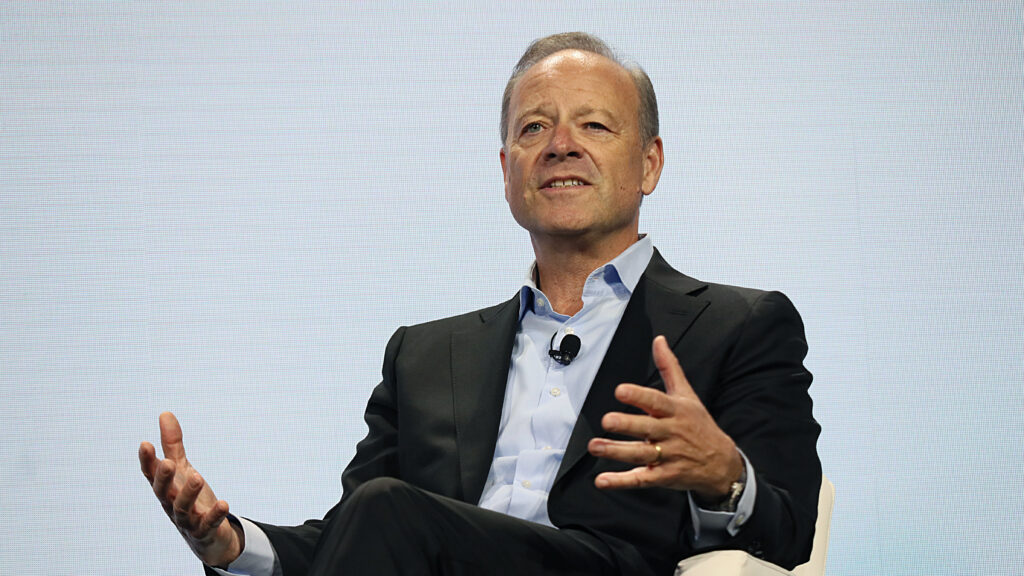Want to stay on top of the science and politics driving biotech today? Sign up to get our biotech newsletter in your inbox.
Lots for you today from the 2023 STAT Summit. Our podcast came live from the rollicking Boston affair, and we heard from plenty of the field’s top players. This includes Biogen CEO Chris Viehbacher, who spoke of how the company wants to move forward in a more disciplined fashion. We also talk about why Beam Therapeutics is cutting back so dramatically, and more.
advertisement
The need-to-know this morning
• Merck is paying billions of dollars to partner with Daiichi Sankyo on a series of cancer drugs, underscoring the excitement around a class of targeted chemotherapy treatments called antibody-drug conjugates. STAT reporter Drew Joseph has more details on one of the largest biopharma licensing deals in recent years.
• A novel type of immunotherapy from Amgen generated strong response rates in patients with advanced small cell lung cancer, results that could lead to the approval of the drug.
What if CRISPR isn’t all that commercial?
How does the NurOwn story end? And how do you pronounce “Bayer”? We cover all that and more this week on “The Readout LOUD,” STAT’s biotech podcast.
Live from Boston at the 2023 STAT Summit, we discuss the latest news in the life sciences, including a milestone in genome editing, a twist in the search for ALS treatments, and the polarizing process of saying words in biotech.
advertisement
Why Biogen is purposefully becoming more risk averse
Biogen CEO Christopher Viehbacher has been working to course-correct after the company’s ruinous Aduhelm gamble — and shared at the STAT Summit how he plans to move the company forward in a pragmatic way. It’ll still be important to pursue risky projects, he emphasized, but in a more disciplined way.
“There’s a huge amount of pride inside the company that we go after problems other people don’t,” Viehbacher said, “but at the end of the day you also have to get medicines through the pipeline to benefit patients, and that’s why we’re expanding the aperture of what we’re doing in R&D.”
The company will no longer put all its eggs in a single drug’s basket, and wants to pivot from being perceived as a high-risk neuroscience company. It’ll expand into immunology and rare diseases, and build a pipeline that will sustain consistent growth.
Beam Therapeutics cutting 20% of its staff
Despite having raised more than $1 billion in venture funding in recent years, base editing biotech Beam Therapeutics plans on laying off 20% of its staff — about 100 employees. The company will be reevaluating some of its programs as it attempts to further cut costs, in an effort to stay afloat in the brutal biotech market.
Although Beam has been cleared to launch clinical trials in cancer and sickle cell disease, it’s had difficulty enrolling enough patients in these CRISPR-based studies. It will prioritize its sickle cell programs, as well as an experimental treatment for alpha-1 antitrypsin deficiency, a rare liver disease. But it’ll pause a hepatitis B program and hopes to partner out with its cancer programs, which are using base editing to build allogeneic cell therapies.
Laronde merges with Flagship compatriot
Laronde, a once-plushly funded startup developing RNA-based medicines, is merging with a fellow Flagship Pioneering company. It’ll join with Senda Biosciences and create a new venture called Sail Biomedicines, and will continue to focus on endless RNA therapies — an approach that was once viewed as a “better, superior … Moderna on steroids,” one company insider told STAT.
Previously, Laronde’s data was hard to replicate, according to an investigation by STAT and the Boston Globe. Laronde shelved its two top drug candidates after the data integrity issue, and dozens of employees — including leadership — have left the company.
Senda was already the product of several Flagship Pioneering startups merging. The company is focused on “SendRNA medicines” that can ferry genetic treatments to specific cells.
More reads
• How to make the EU’s new Joint Clinical Assessment process work for industry — and for patients, STAT
• How biotech deal-making really works behind the scenes, according to founders, STAT
• Zuckerberg and Chan on track to put $50 billion toward science: ‘That’s the trajectory we’re on,’ STAT

